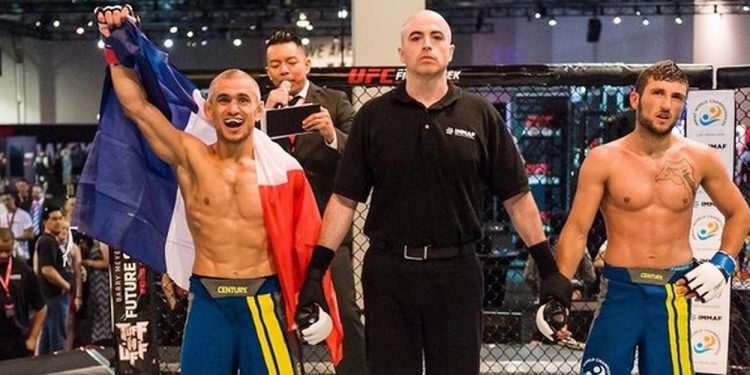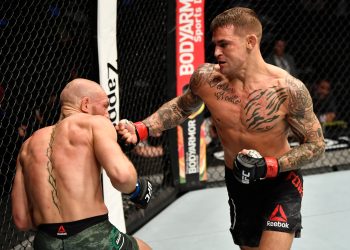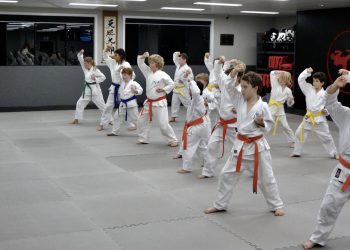Amateur MMA fights have increasingly gained popularity as they serve as a crucial stepping stone for aspiring fighters aiming for professional careers. The world of Mixed Martial Arts is thrilling and multifaceted, offering an electrifying mixture of styles, techniques, and opposite paradigms. In this extensive piece, we’ll explore how amateur MMA fights are structured, their importance in the industry, and delve into some of the fascinating stories surrounding these events. From wrestling to jiu-jitsu, and striking to grappling, amateur matches offer a complex playground for fighters to test and refine their skills.
The Gateway to Professional MMA
Amateur MMA competitions act as a vital platform for fearless young fighters aiming to transition into professional arenas. They are the testing grounds where talent is nurtured, and perseverance is paramount. These matches allow fighters to experience the adrenaline rush of competition without the financial risks tied to professional fighting. It’s like the rehearsal before the final act; every punch, every take-down is a learning curve.
Understanding the Rules
Unlike professional MMA, where the stakes are higher, amateur fights are governed by their own set of rules designed to protect the fighters. For instance, matches often prohibit elbow strikes to the head and limit the length of fighting rounds. Safety gear is another significant difference—headgear and shin guards are commonly worn to reduce injuries. The question that often bugs fans is: do these restrictions limit the essence of real fighting? Interestingly, many former amateurs believe these rules help in focusing on technique rather than brute force, polishing their skills for future challenges.
Training: The Unsung Hero
You might think that the fight itself is the most taxing part of a fighter’s journey, but honestly, it’s the rigorous training that takes the crown. Amateur MMA athletes often train 20-30 hours a week, balancing conditioning, sparring, and skill development. It’s all about building stamina, refining techniques, and—most importantly—mental discipline. Legendary fighters often attribute their success to this grueling routine. It’s not just about punching bags and lifting weights; it’s the resilience built over hours of sweat and toil.
Did you know? Many amateur fighters juggle full-time jobs while training, proof of their unyielding passion for the sport.
The Role of Coaches and Mentors
A fighter is only as good as those guiding them. Coaches and mentors play a pivotal role, offering not just training assistance but also critical strategy insights. They’re the unsung heroes stationed outside the cage, giving real-time advice and moral support. With their experienced eyes, they can discern the importance of a well-timed low-kick or a defensive guard. Their wisdom often comes from their own years spent in the ring.
Women in Amateur MMA
Women have been shattering stereotypes across various fields, and MMA certainly isn’t an exception. Female amateur fighters are now a common sight, and their matches have gained a substantial following. The presence of strong female fighters has forced the world to reconsider outdated notions about strength and combat, and it’s a massive step forward for gender equality. Iconic figures, like Ronda Rousey, have inspired many young women to don the gloves themselves.
Popular Techniques Used in Fights
Amateur MMA fights are a melting pot of martial arts disciplines. Fighters often blend striking techniques from Muay Thai with grappling approaches from Brazilian Jiu-Jitsu or wrestling. The combination of styles leads to more dynamic competition and, in part, what makes MMA so magnetic. These matches reveal not just physical prowess but also strategic minds, always thinking two steps ahead, preparing for the next counter or attack.
Experimentations in the Cage
Unlike the professional circuit, amateur fights offer a unique opportunity for fighters to experiment with different styles and strategies without the fear of damaging their reputation. The ring becomes a laboratory where athletes test theories and refine techniques. It’s where they learn what truly works for their style and what doesn’t.
Inspirational Fighter Stories
Behind every fight card, there are countless stories of determination, sacrifice, and moments of doubt. Many fighters participate in amateur matches to escape difficult circumstances or to prove something to themselves or loved ones. These personal backstories are sometimes as compelling as the fights themselves. They remind us that in the cage, every fighter carries more than the weight of the gloves; they carry dreams.
| Fighter | Training Hours per Week | Main Disciplines |
|---|---|---|
| John Doe | 25 | Jiu-Jitsu, Wrestling |
| Jane Smith | 30 | Muay Thai, Boxing |
| Alex Johnson | 20 | Karate, Judo |

Frequently Asked Questions
Are amateur MMA fights safe? Yes, they are generally safe thanks to strict regulation and safety gear.
Do amateur matches focus more on technique than strength? Yes, due to restrictions that favor skill development over brute force.
Is there a significant difference between amateur and professional MMA participants? Primarily experience and competition stakes differ.
Closing Thoughts
Amateur MMA fights offer an arena where dreams meet reality, a playground where strategy marries skill. They serve as the crucial incubators of talent that inspire upcoming fighters to pursue passion amidst challenges. Each fight is a testament to an athlete’s spirit and willingness to grow. Thank you for diving into the world of amateur MMA with us, and make sure to explore more fascinating topics on our website.















